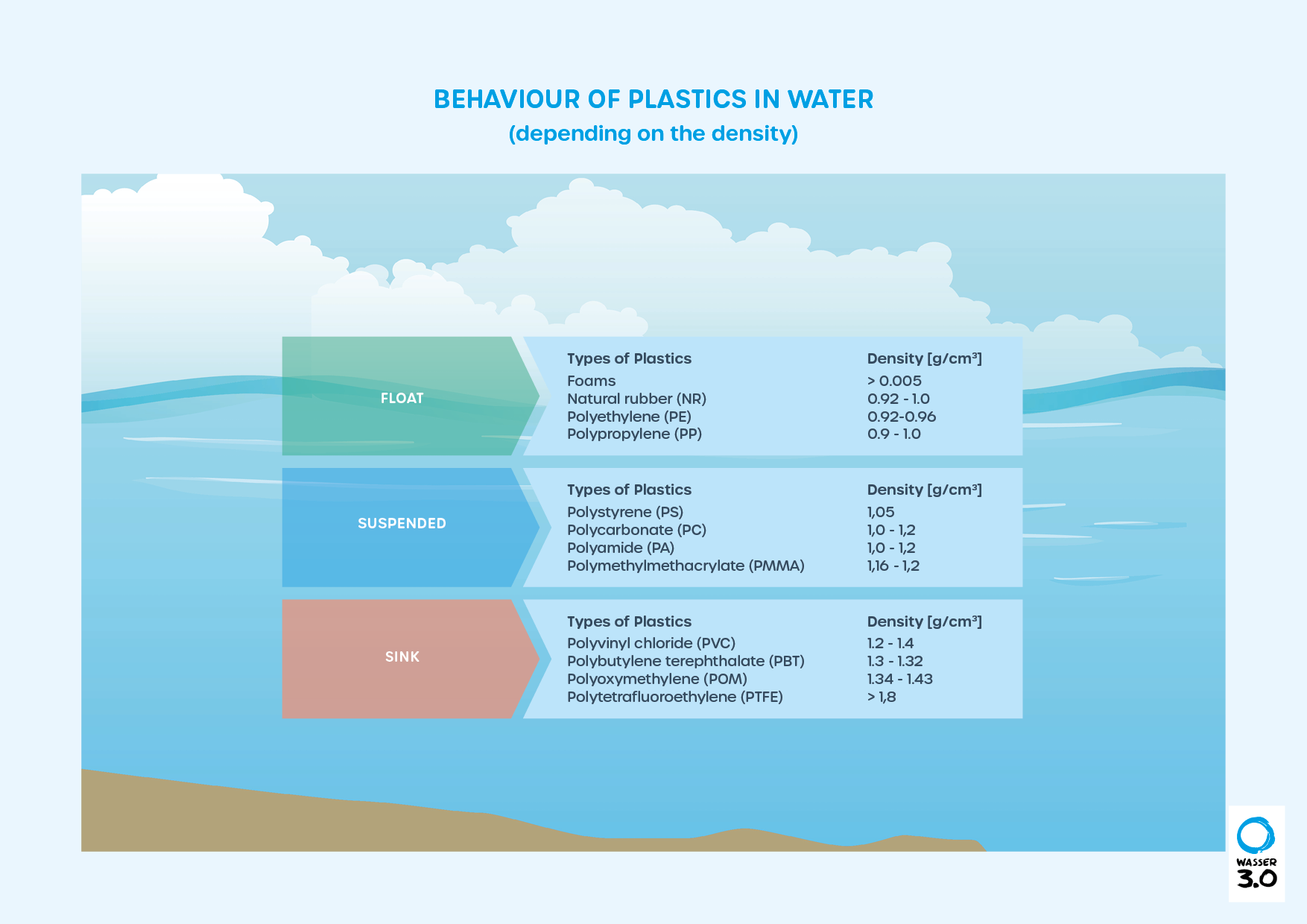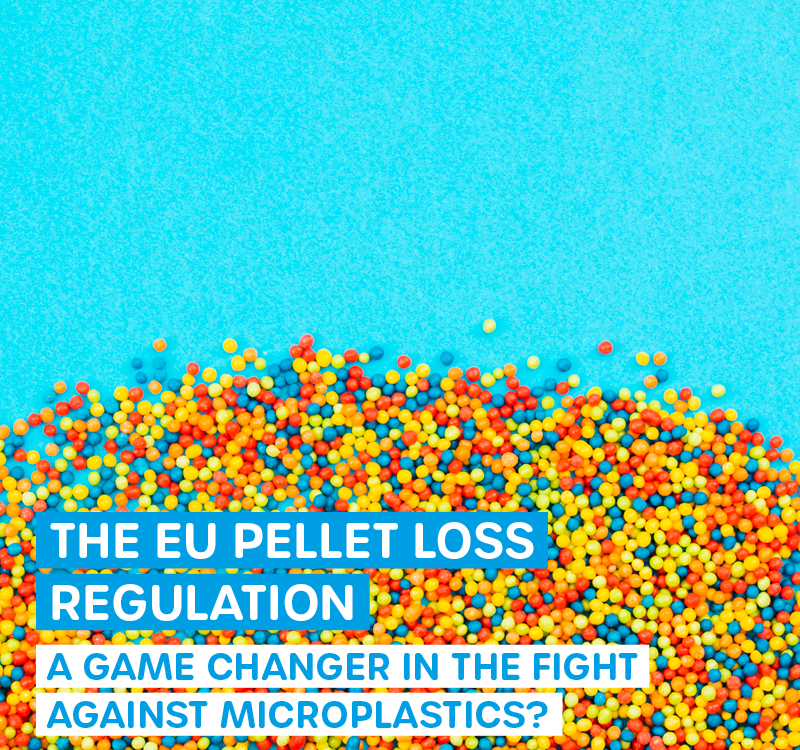
Gully Filters Against Microplastics
27. September 2025
Ocean Bound Plastics
3. October 2025Microplastics Analytics: Can AFS 63 be Used for Microplastics Detection?
A critical look at traditional analytical standards and the complexity of microplastic characterization
Complexity Behind the Term "Microplastics"
Microplastics are not just one compound -- this simple statement already reveals the fundamental challenge of microplastics analysis. In fact, microplastics represent a complex composition of over 200 different polymer types that are used in millions of products. This immense diversity -- from polyethylene to polystyrene to complex copolymers -- makes uniform characterization and quantification one of the greatest analytical challenges of our time.
This diversity is also reflected in physical properties: microplastic particles vary not only in their chemical composition but also in shape (fibers, fragments, spheres), size (1 μm to 5 mm according to ISO 24187:2023), density, and surface properties. Each of these variations influences both their behavior in environmental media and the analytical requirements for reliable detection.

Behavior of Plastics in Water © Wasser 3.0
AFS 63: An Established Parameter with New Application Possibilities in Microplastics?
Spoiler: The answer is no!
The parameter AFS 63 (Filterable Substances/total solid substances < 63 μm) has long been established in German water analysis and is primarily used for characterizing fine particulate matter in water and wastewater samples. This fraction is particularly relevant because heavy metals such as zinc and lead preferentially attach to particles of this size range. According to DWA-A 102, AFS 63 serves as a reference parameter for the material load of precipitation runoff.
But can AFS 63 also be made usable for microplastics analysis? Our clear answer: NO!
Despite all cost and time savings, the fundamental problem prevails: The result of an AFS 63 analysis cannot be correlated with microplastics. Even artificial intelligence currently reaches its limits due to the maximum heterogeneity of microplastics and the enormous variances.
The decisive limitations of AFS 63:
- Selectivity problem: AFS 63 captures all particles < 63 μm -- differentiation between microplastics and other solids (organic matter, minerals) is impossible.
- Missing chemical identification: The parameter provides no information about polymer types, which is essential for sound risk assessments.
- Density dependence: Many microplastic particles have a lower density than inorganic particles, which fundamentally influences sedimentation characteristics.
Where Do We Stand with Microplastics Analysis?
In September 2023, ISO 24187 "Principles for the analysis of microplastics present in the environment" was published as the first internationally recognized standard. This defines microplastics as solid, water-insoluble plastic particles with at least one dimension between 1 μm and 1,000 μm.
The analytical techniques recommended therein:
- FTIR Spectroscopy (Fourier-Transform Infrared)
- Raman Spectroscopy
- Py-GC/MS (Pyrolysis-Gas Chromatography-Mass Spectrometry)
- Thermogravimetric Analysis
Numerous recent studies have validated these approaches. Quantitative Raman analysis demonstrates high linearity with R² values of 0.98537 for PE and 0.99511 for PVC when analyzing microplastics in water, while comparative studies show μ-Raman can quantify two-times higher MP numbers than FTIR imaging, though requiring four-times higher analysis time.
Critical Point: The Neglected Fluorescence Microscopy
Although fluorescence microscopy has been delivering impressive results for years, it is not listed as an equivalent method in ISO 24187:2023. Lobby representations of established equipment manufacturers have apparently influenced standard development through universities and research institutions, systematically excluding more cost-effective alternatives.
However, the scientific evidence for fluorescence microscopy is overwhelming:
- Throughput advantages: Hours instead of weeks for analysis results
- Cost factor: Significantly cheaper than spectroscopic single-particle analysis
- Long-term monitoring capability: Enables large sample numbers for representative statements
It is urgently necessary to integrate these methods into future ISO standards.
We Deliver Answers with the Wasser 3.0 detect MP-1 Method
We have established ourselves as pioneers in developing practical solutions with countless publications over the years. Our detect | remove | reuse approach addresses the entire value chain of microplastics treatment.
The heart of innovation is the special fluorescence marker "abcr eco Wasser 3.0 detect mix MP-1":
Superior Performance:
- 99.9% Specificity - while Nile Red fails with 100% overestimation
- 15 minutes instead of 15 hours analysis time
- 56% cost savings compared to spectroscopic methods
- Automated software recognition to minimize subjective errors
Long-term Analysis Data Already Collected: We Deliver Unprecedented Data – Locally and Globally
Our long-term monitoring programs have already generated a unique wealth of data:
- Over 320 samples in two years from the Landau-Mörlheim treatment plant
- Comparative studies between three treatment plant types (two-, three-, four-stage treatment)
- 572 million microplastic particles per day - systematic quantification of environmental load
The revolutionary "Global Map of Microplastics" project demonstrates practical scalability:
- Interactive world map with type and intensity of microplastic contamination
- Standardized citizen science through the Wasser 3.0 app
- Analysis kits for decentralized sampling - democratized microplastics research
Germany in Focus: River Monitoring
- Systematic survey of the Queich: Average 240 MP particles/L, hotspots up to 944 particles/L
- Source-to-mouth analyses for source identification
- Correlation with population density and industrial locations
Why Do We Need Practical Solutions for Microplastics Analysis?
The revised EU Urban Wastewater Treatment Directive mandates microplastics monitoring from 2025:
- ≥ 100,000 PE: Twice annually
- ≥ 10,000 PE: Every two years
Current research demonstrates that microplastic size distribution is highly heterogeneous. Sampling with nets provides water samples for microplastics analysis, but with a lower detection limit of 330 μm, which excludes a large size fraction that has proven to be the most frequent. Standardization begins with sample collection, which should be considered.
The Scientific Evidence is Clear: AFS 63 Also Fails the Basic Requirements of Modern Microplastics Analysis!
The decisive arguments:
- Systematic size fraction bias: AFS 63 considers only a small, non-representative section of over 200 polymer types across the entire size spectrum of 1 μm to 5 mm.
- Missing chemical specificity: Without polymer recognition, scientifically sound evaluation is impossible.
- Non-representative data basis: Long-term studies show massive temporal and spatial variations that a sum parameter cannot capture.
- AI limitations: Even the most advanced algorithms cannot compensate for the fundamentally insufficient data quality of AFS 63.
This results in consequences for practice:
- Treatment plant operators: AFS 63 systems for microplastics monitoring waste valuable resources
- Environmental authorities: AFS 63-based limit values are founded on scientifically untenable foundations
- Research: Focus on specific, chemically identifying methods - Method openness and transparency are the key
The Way Forward
The future of microplastics analysis lies in specific, robust, and standardized methods that:
- Enable chemical identification
- Capture the entire size spectrum
- Consider temporal and spatial variability
- Are suitable for regulatory applications
Our innovative approaches show the way: Fluorescence-based detection combined with machine learning can deliver the required specificity and practicality. AFS 63 does not belong to this.






